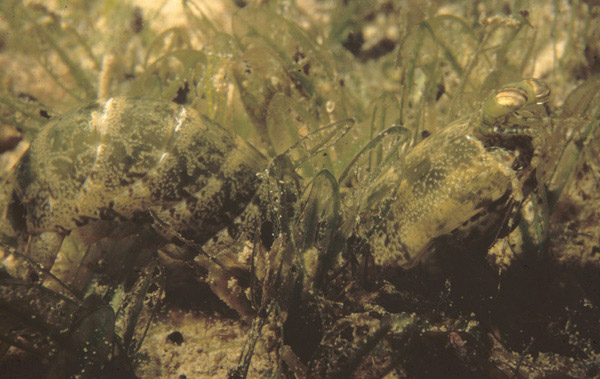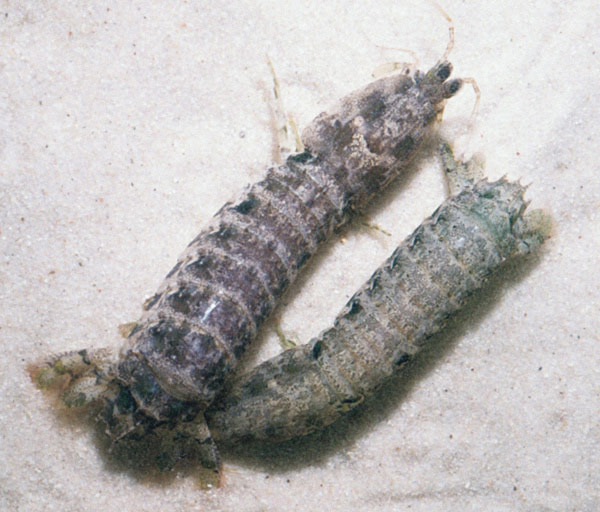Evolution changes me (Adaptation)
Pseudosquilla ciliata are
exquisite predatory creatures that crawl along
the bottoms of shallow waters with the help of their legs and
other appendages. All stomatopods have different morphological,
physiological, and behavioral traits which allow them to capture
and process prey differently.
Crustaceans are widely known for
their feeding appendages; P. ciliata have two main
categories based on the criteria of their appendages: smashers
and spearers. P. ciliata are categorized as spearers
(Patek et al, 2004). This specific morphology allows them
to seize and hold their prey with three spines on the feeding
appendage (Patek et al, 2004). These spines enable the stomatopod to impale soft
bodied prey (Patek et al, 2004).
of their appendages: smashers
and spearers. P. ciliata are categorized as spearers
(Patek et al, 2004). This specific morphology allows them
to seize and hold their prey with three spines on the feeding
appendage (Patek et al, 2004). These spines enable the stomatopod to impale soft
bodied prey (Patek et al, 2004).
For stomatopods to be able to generate severe motions with their appendages in bodies of water, they must exert a costly amount of energy. Stomatopods use the 'click mechanism' to make this happen. During this process, the appendages delay until the muscle contraction has reached maximum strength; after it has been released, the stored energy that has been built up over the duration of this process can transfer at a faster rate compared to the time duration needed for the appendage to move without this mechanism (Patek et al, 2004). Because their appendages move at a faster rate, the strikes they give to their prey will be more substantial (deViries 2010). These predatorial appendages can produce one of the fastest motions in the animal kingdom; by doing so, they can easily impale shrimp and smallfish (deViries 2010).
In a study done by biologists Crownin and Marshall in 1989, they founded that Pseudosquilla ciliata have a retina in their eye that contains eleven different photoreceptors; this give the organism maximum optical filters. Within the central band of the eye, they can produce a variety of different visual pigments that sharpens the light passing through creating a sensitivity within the eye itself. P. ciliata are better adapted to see differences in other organisms than any terrestrial organism. With their sensitive eyesight, they are able to see almost every detail while living in their aquatic environment.
The sense of smell is diluted for
some organisms once they are in water, but crustaceans can ‘sniff’ out
their prey by way of their olfactory lobes within their antennae (Stacey
et al, 2002). Stomatopods flick water molecules until they are
near the surface of the nerve ending chemosensory structure;
 once these
nerve endings become stimulated with water molecules, stomatopods get a
sense for how far or near a prey organism may be from them by how strong
or weak the smell is (Stacey et all, 2002).
once these
nerve endings become stimulated with water molecules, stomatopods get a
sense for how far or near a prey organism may be from them by how strong
or weak the smell is (Stacey et all, 2002).
Stomatopods, along with many other Arthropods, molt (Reaka, 1979). They molt their chitinous exoskeleton as they grow, because if not shed the organism would not have the ability to increase its body size. Therate this species molt is not only affected by their growth rate, but also different ecological factors within their environment (Brown and Bert, 1993). One of these factors depends on the varying rate of salinity in the water (Brown and Bert, 1993).
As you can see; P. ciliata
are very adapted to their habitats. Whether it’s their color or
their raptorial feeding appendage, they are adapted in the best way they
can be to survive in the areas in which they are found.
Click to continue to the
Interactions!
